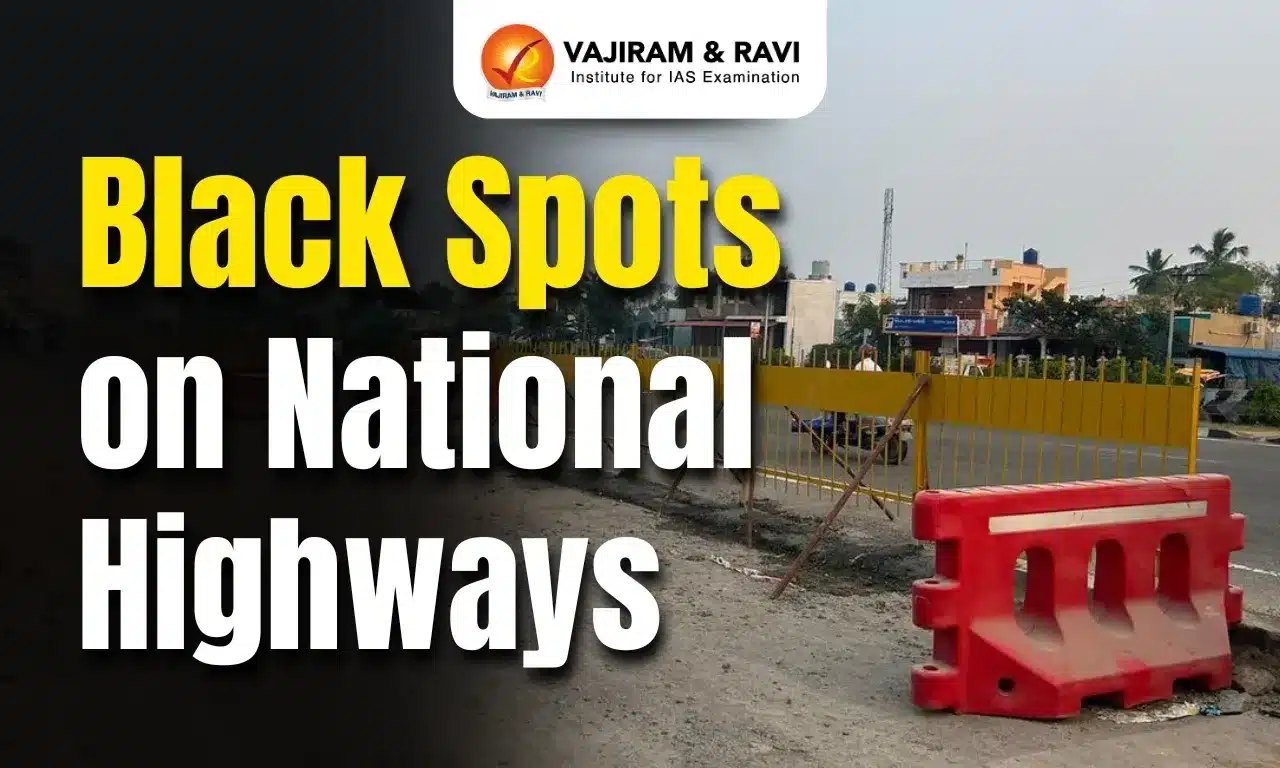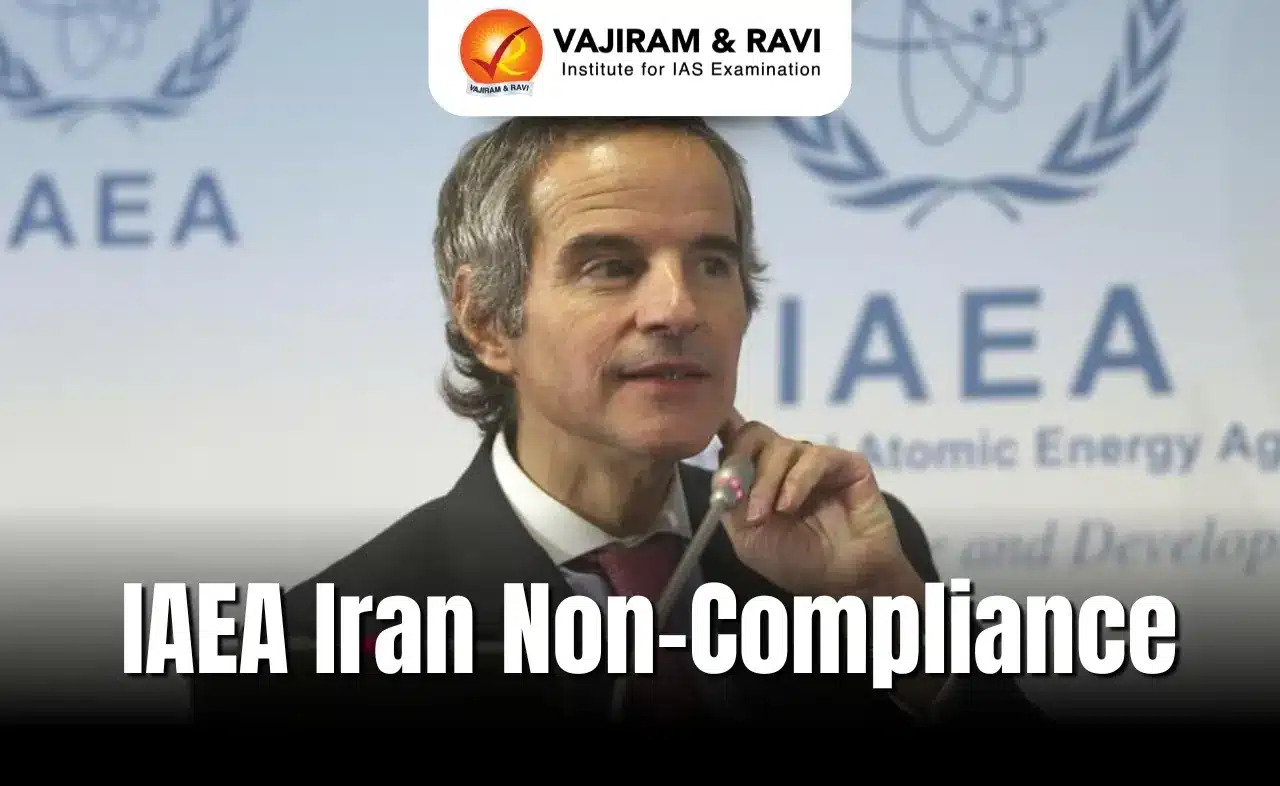What’s in Today’s Article?
- Ministry of Road Transport and Highways Latest News
- Background
- About Black Spots
- Parliamentary Panel’s Findings: A Governance Failure
- Three-Tier Action Plan for Fixing Black Spots
- Need for Post-Implementation Audits
- MoRTH’s Targets and Reality
- Conclusion
- Black Spots on National Highways FAQs
Ministry of Road Transport and Highways Latest News
- The Parliamentary Standing Committee on Transport, Tourism and Culture has criticised the Ministry of Road Transport and Highways (MoRTH) for the persistent existence of accident-prone “black spots” on national highways (NHs).
Background
- India has one of the highest numbers of road accidents in the world.
- A significant portion of these fatalities happen on national highways (NHs) due to poorly designed or managed road segments called “black spots”, specific locations where a high number of accidents and fatalities have been recorded over the years.
- Despite various efforts by the Ministry of Road Transport and Highways (MoRTH) to reduce road deaths, a recent report by the Parliamentary Standing Committee on Transport, Tourism and Culture reveals worrying gaps in execution.
- According to MoRTH’s own data, out of 13,795 black spots identified across India’s NHs, long-term rectification has been completed on only 5,036 spots.
- This translates to a large number of dangerous zones still unaddressed, posing daily risks to drivers and pedestrians.
About Black Spots
- A “black spot” is a hazardous location on a national highway identified by the frequency and severity of road accidents, particularly those causing grievous injuries or deaths across three consecutive years.
- These spots can occur due to poor road design, lack of signage, bad lighting, sharp curves, or congested junctions.
Parliamentary Panel’s Findings: A Governance Failure
- In a report related to the Demands for Grants for FY 2025-26, the parliamentary panel called the poor progress a “significant governance failure”.
- It emphasised that these black spots represent preventable dangers that could be fixed with faster, coordinated intervention.
- The committee, led by Rajya Sabha MP Sanjay Kumar Jha, expressed deep concern about the mismatch between the ministry’s commitments and the reality on the ground.
Three-Tier Action Plan for Fixing Black Spots
- To address the issue, the panel has recommended a three-tier prioritisation framework based on:
- Severity (how often and how serious the accidents are),
- Complexity of the fix required, and
- Population exposure (how many people use the spot regularly).
- The plan includes strict time-bound interventions:
- Category A black spots (highest risk):
- Temporary safety measures must be deployed immediately.
- Permanent rectification must begin within 30 days of identification.
- Category B black spots (moderate risk):
- Must be fixed within 90 days.
- Category C black spots (lower priority):
- Deadline of 180 days.
- Agencies that fail to meet the timelines should face penalties.
- Category A black spots (highest risk):
Need for Post-Implementation Audits
- The panel didn’t just focus on fixing black spots, it also highlighted the importance of follow-up.
It recommended that safety audits be carried out at 3-month and 12-month intervals after rectification to ensure the solutions actually work. - To promote accountability, the panel suggested creating a public dashboard that would show the status of each black spot, the progress of rectification, and the responsible implementing agency.
MoRTH’s Targets and Reality
- The ministry has set an ambitious goal to reduce road fatalities by 95% by 2028.
- As part of this, it has committed to fixing 1,000 black spots in FY 2025–26 and eliminating all identified black spots by FY 2027-28 through better signage, road design, and junction management.
- However, the numbers so far reflect a lag in long-term fixes:

- Short-term solutions (like installing signage, speed breakers, or barriers) are often implemented, but long-term structural fixes, such as underpasses, road widening, or redesign—remain slow.
Conclusion
- Fixing black spots on national highways isn’t just a technical challenge, it’s a matter of saving lives.
- The current pace of work is not in sync with the ministry’s stated ambitions. The parliamentary panel’s recommendations provide a clear and actionable path forward, focusing on urgency, accountability, and transparency.
- To truly make Indian roads safer, quick identification must be followed by equally fast execution, because behind every black spot, there’s a life that can be saved.
Black Spots on National Highways FAQs
Q1. What is a black spot on a national highway?
Ans. Black spot is a location with frequent fatal or serious accidents over three years.
Q2. How many black spots have been identified in India?
Ans. Total of 13,795 black spots have been identified so far on national highways.
Q3. What is the government’s target for black spot rectification?
Ans. MoRTH aims to fix 1,000 spots in FY26 and eliminate all by FY28.
Q4. What has the parliamentary panel recommended?
Ans. A three-tier action plan with 30-, 90-, and 180-day deadlines based on risk category.
Q5. How many black spots have received long-term fixes?
Ans. Only 5,036 black spots have been permanently rectified as per latest data.
Source: IE
Last updated on June, 2025
→ UPSC Notification 2025 was released on 22nd January 2025.
→ UPSC Prelims Result 2025 is out now for the CSE held on 25 May 2025.
→ UPSC Prelims Question Paper 2025 and Unofficial Prelims Answer Key 2025 are available now.
→ UPSC Calendar 2026 is released on 15th May, 2025.
→ The UPSC Vacancy 2025 were released 1129, out of which 979 were for UPSC CSE and remaining 150 are for UPSC IFoS.
→ UPSC Mains 2025 will be conducted on 22nd August 2025.
→ UPSC Prelims 2026 will be conducted on 24th May, 2026 & UPSC Mains 2026 will be conducted on 21st August 2026.
→ The UPSC Selection Process is of 3 stages-Prelims, Mains and Interview.
→ UPSC Result 2024 is released with latest UPSC Marksheet 2024. Check Now!
→ UPSC Toppers List 2024 is released now. Shakti Dubey is UPSC AIR 1 2024 Topper.
→ Also check Best IAS Coaching in Delhi






















